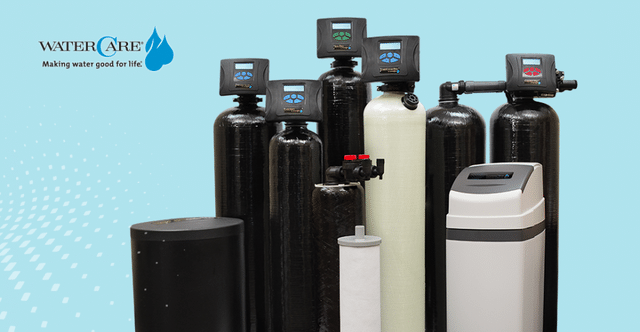Your Home's Water - Water Treatment Systems for Home Use

Treated water is a vital part of our lives that is often overlooked. Simple things we take for granted, like pouring a glass of water from the faucet, brushing our teeth, and even taking a shower would feel a lot different if the water coming through our fixtures was full of impurities and contaminants.
Fortunately, water treatment systems offer a reliable way to resolve home water problems. When considering a water treatment system for your home, the proper product will fall under two basic categories: a point of entry (POE) or a point of use (POU) solution.
Different systems are designed to meet different goals.
Point of Entry Systems
POE systems treat water coming in through the main water line of your home. Commonly referred to as “whole house systems,” these systems treat all the water that eventually gets distributed to your faucets, dishwasher, washing machine, shower, and other fixtures in your home.
Common POE water treatment systems include:
- Water softeners
- Conditioners
- Filtration units
- Acid neutralizers
POE systems are high capacity, meaning they can treat hundreds or even thousands of gallons of water a day. These units are typically larger in size than the POU systems and because of that, require less maintenance and fewer filter replacements.
We will recommend a point of entry system for any contaminants that can do damage throughout your entire home. Acidic water, for example, can eat away at all of the plumbing and fixtures the water flows through. If left untreated, acidic water can create holes in your pipes that will leak and cause water damage. So, it would be helpful to neutralize the water as soon as it enters your home, before it has a chance to run through any of the pipes in your basement, walls, and faucets.
Point of Use Systems
POU water treatment systems, on the other hand, are located at the end “point” of your water line. They will filter your water right before you need to use it.
Point of use systems might include a filter underneath your kitchen sink or a filter built into your fridge for dispensing water and making ice. POU systems are best used for smaller quantities of water and where you expect the highest quality of water. Because these systems are smaller, their filters need to be replaced more often – typically anywhere from 6 months to 1 year.
The most common type of POU system used for water treatment is a reverse osmosis (RO) system. These purification systems help reduce all kinds of particles and impurities in your water like chlorine, fluoride, metals, and other contaminants. The end result is purer and better tasting water.
What’s the Best Water Treatment System for My Home?
As a homeowner, you might feel overwhelmed by the water treatment options available. How do you know which one is right for you? It’s possible you may just need one type of product, but many homes would benefit both from a point of use and a point of entry water treatment system.
The first step is to identify the type of water issues you’re looking to resolve. It’s not uncommon for homeowners to have more than one complaint about their water. Maybe it’s hard and smells bad. Or maybe you’re worried about your family drinking contaminants that may be affecting their health.
Let us help you find out what you’re dealing with! We will come out to your home and conduct a free water test of the most common water complaints. Then we’ll review those results with you and help you understand which system can best address your unique water problem. If you are interested in more robust testing, we can send your water samples off to our lab to do a more in-depth analysis.
- Hard water and chlorine: Let’s say your home is on city water. Your water test might indicate you have hard water, specifically high levels of calcium and magnesium. You may also notice that your city water smells and tastes like chlorine due to your city’s water treatment process.
In this situation you may opt for a combination filter and water softener like the CareSoft Elite RC®. A point of entry system, this combination unit will provide soft water and filter out chlorine. - Lead contamination: Perhaps you live in an older house with lead pipes, or you’re worried about your city’s aging water infrastructure. A water softener alone cannot help with lead removal, plus having lead in your water isn’t a big issue to flush your toilets with or shower in. You only have to be concerned about lead in the water you are drinking or cooking with because it gets ingested.
In this case, your water treatment specialist might recommend installing a point of use reverse osmosis filter at your kitchen faucet. This way you always have trusted, purified drinking water right from your tap.
Start Here for Home Water Treatment Systems
As you can see, the right combination of POE and POU systems can help you achieve your water quality goals. Building your perfect system starts with a home water test. Once you know exactly what’s inside your water, we can take steps to remove it.
If you have questions about home water treatment, or would like to schedule your water test, please contact us today.

